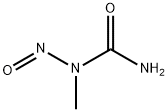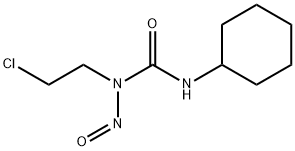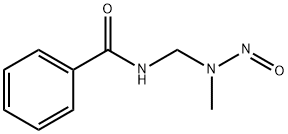N-Nitrosodimethylamine , 99% , 62-75-9
CAS NO.:62-75-9
Empirical Formula: C2H6N2O
Molecular Weight: 74.08
MDL number: MFCD00002053
EINECS: 200-549-8
PRODUCT Properties
| Melting point: | <25 °C |
| Boiling point: | 153 °C774 mm Hg(lit.) |
| Density | 1.01 g/mL(lit.) |
| vapor pressure | 5 mm Hg ( 20 °C) |
| refractive index | n |
| Flash point: | 142 °F |
| storage temp. | 2-8°C |
| solubility | Soluble in solvents (U.S. EPA, 1985), including ethanol and ether (Weast, 1986) |
| pka | -3.63±0.70(Predicted) |
| form | Yellow liquid |
| color | Colourless to Light Yellow |
| Water Solubility | Miscible (Mirvish et al., 1976) |
| Merck | 13,6671 |
| Henry's Law Constant | 0.143 at 25 °C (estimated using a solubility of 1,000 g/L) |
| Dielectric constant | 54.0(20℃) |
| Stability: | Stability Stable, but light-sensitive. Combustible. Incompatible with strong oxidizing agents, strong bases, strong reducing agents. |
| CAS DataBase Reference | 62-75-9(CAS DataBase Reference) |
| IARC | 2A (Vol. 17, Sup 7) 1987 |
| EPA Substance Registry System | N-Nitrosodimethylamine (62-75-9) |
Description and Uses
Nitrosamines are chemicals that possess the general structure
R1N(R2)-N=O. These chemicals have been used in the manufacture
of rocket fuel, cosmetics, pesticides, and polymers.
Research studies dating back to the 1950s have demonstrated
that most nitrosamines (>90%) possess some degree of toxicity.
Of particular interest is the nitrosamine N-nitrosodimethylamine
(DMN). This semi-volatile organic
compound is highly toxic and is a suspected human carcinogen.
At higher doses, it has been shown to be a hepatotoxin
that causes liver fibrosis and cancer in several animal species. Its
toxic effects were first reported by British scientists John Barnes
and Peter Magee in 1956 during their screening of chemicals
that were being used as solvents in the dry cleaning industry.
Since then, levels of DMN have been detected in food, drinking
water, soil, and air.
The consumption of contaminated food and water accounts
for the majority of the exposure to DMN. Most nonoccupational
exposure to DMN is a result of chemical reactions
between precursors that form DMN, rather than the industrial
utilization of the chemical itself. For example, after DMN was
discovered in beer in Europe in the 1970s, it was shown that the
direct firedrying of the malt barley used was the DMN source.
Modifications to the drying procedure were able to substantially
reduce the levels of DMN found in beer today. Additionally,
the formation of DMN was attributed to an outbreak
of liver cancers and disorders in livestock that were fed herring
meal in Norway in the 1970s. Subsequent studies showed that
reaction of dimethylamine (naturally occurring in fish) with
nitrosating reagents derived from sodium nitrite (a widely used
preservative) formed the NMD responsible for the liver toxicities.
These studies caused widespread concern over the use of
sodium nitrite in many foods consumed by humans. To
ameliorate the formation of DMN in food caused by sodium
nitrite, manufactures now add antioxidants such as ascorbic
acid (vitamin C), erythorbic acid (an isomer of ascorbic acid),
and a-tocopherol (vitamin E).
DMN has been found in groundwater in many states. Major
sources of DMN in groundwater include rocket fuel production,
and water treatment via chlorination or chloroamination
of wastewater. The removal of DMN from drinking water
usually involves ultraviolet treatment or reverse osmosis.
No longer used industrially or commercially in the US; may occur as a by-product from the manufacture of pesticides, rubber tires, alkylamines, and dyes
Safety
| Symbol(GHS) |    GHS06,GHS08,GHS09 |
| Signal word | Danger |
| Hazard statements | H301-H330-H350-H372-H411 |
| Precautionary statements | P264-P270-P301+P310-P321-P330-P405-P501-P260-P271-P284-P304+P340-P310-P320-P403+P233-P405-P501-P260-P264-P270-P314-P501 |
| Hazard Codes | T+,N,T,F |
| Risk Statements | 45-25-26-48/25-51/53-39/23/24/25-23/24/25-11 |
| Safety Statements | 53-45-61-36/37-16 |
| RIDADR | UN 3382 6.1/PG 1 |
| WGK Germany | 3 |
| RTECS | IQ0525000 |
| TSCA | TSCA listed |
| HazardClass | 6.1(b) |
| PackingGroup | III |
| Hazardous Substances Data | 62-75-9(Hazardous Substances Data) |
| Toxicity | LD50 i.p. in rats: 34 mg/kg (Heath) |




